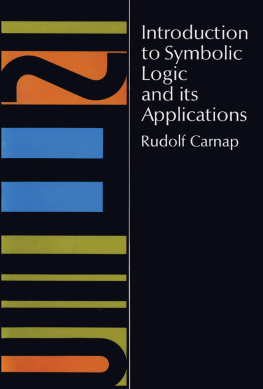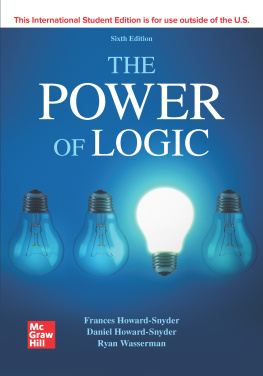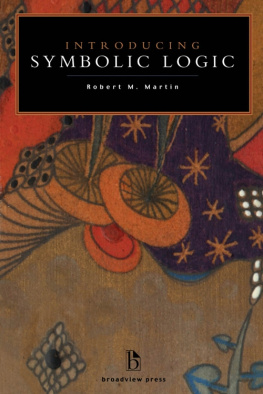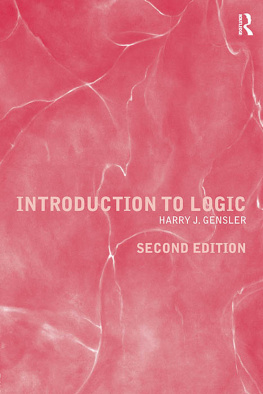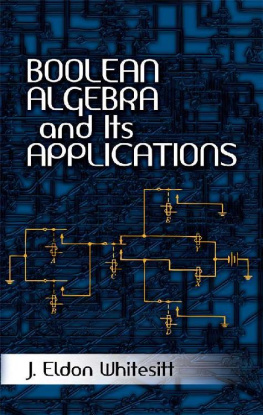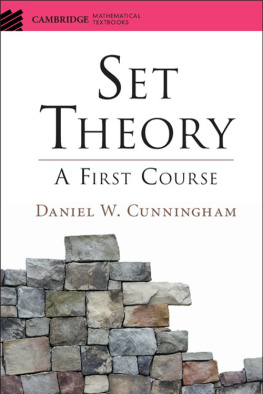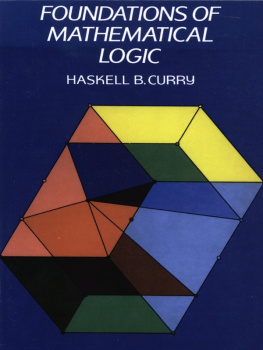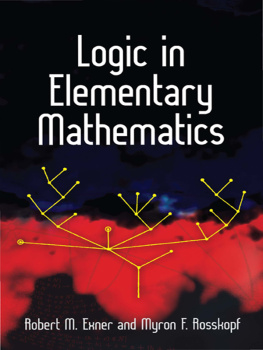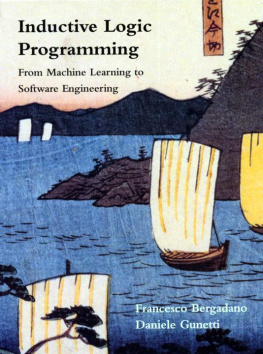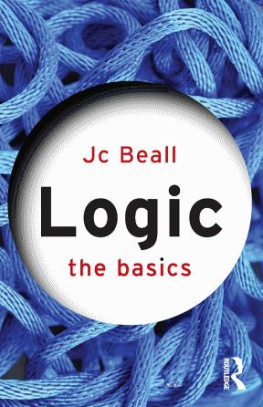INTRODUCTION TO SYMBOLIC LOGIC
AND
ITS APPLICATIONS
BY
RUDOLF CARNAP
University of California
Translated by
William H. Meyer, University of Chicago
and
John Wilkinson, Wesleyan University
Dover Publications, Inc.
New York
Copyright 1958 by Dover Publications, Inc.
All rights reserved.
This Dover edition, first published in 1958, is a new English translation of Einfhrung in die symbolische Logik as published by Julius Springer in 1954.
International Standard Book Number: 978-0-486-14349-1
Library of Congress Catalog Card Number: 58-12611
Manufactured in the United States by Courier Corporation
60453518
www.doverpublications.com
For
INA
in deep gratitude
PREFACE TO THE ENGLISH EDITION
I wish to express my gratitude to my two translators, Professor William H. Meyer of the University of Chicago and Professor John Wilkinson of Wesleyan University, who between them provided the basic translation, revised it, made many improvements in wording and arrangement, and supplied additional explanations. The translation owes its existence to their generous devotion of time and interest. Translating a technical book requires a good knowledge of the subject matter in addition to linguistic abilities and sensitivities. In my opinion, the translators happily combined these abilities and performed an excellent job.
Except for numerous minor corrections and changes made either by me or by the translators, the translation follows in general the German original. In the following places, however, I made major changes or additions. In are now based on this simpler version.
The bibliography () has been brought up to date. In chapters A, B, and C, many new exercises have been added; I wish to thank my student, David B. Kaplan, for his efficient help in this connection.
For the most part, the terminology in this English edition is based on terms used by me in classes and in recent publications. Suggestions for some other terms I owe to the translators and other colleagues. I went over the whole translation carefully and bear the sole responsibility for the accuracy of the content.
RUDOLF CARNAP
University of California
at Los Angeles
May 1957
PREFACE TO THE GERMAN EDITION
During the past century logic has assumed an entirely new form, that of symbolic logic (or mathematical logic, or logistic). The use of symbols is, of course, the most striking feature of the new logic. Nevertheless, its essential characteristics lie in other directions: precision of formulation, greatly extended scope (especially in the theory of relations and of high-level concepts), manifold applications of its new methods. In consequence the last decades have seen an ever-increasing interest in symbolic logic, notably among mathematicians and philosophers, but also among those working in quite specialized fields who give attention to the analysis of the concepts of their disciplines.
Today, and particularly in the United States, symbolic logic is a recognized subject for teaching and research. The majority of American scholars who write on epistemology, analysis of language, scientific method, foundations of mathematics, axiomatic method, and the like, regard symbolic logic as an indispensable tool.
It is my hope that this book will reinforce, among German-speaking peoples, the general interest in symbolic logic.
What chiefly differentiates the present book from other logic texts (mostly in English) may be summarized under the following heads. In addition to the elementary portions of the theory, whose treatment is customary in most books, there is also a detailed presentation of the more advanced topics (especially the logic of relations) required for the application of logic. Further, the entire second part of the present book is given over to the application of symbolic logic. In this second part we first explain the construction of various language forms that must be considered in the application of logic; thereafter, we give in symbolic form axiom systems from different fields. Finally, in accordance with modern views, the present book outlines the theories of formal language systems (logical syntax) and interpreted language systems (semantics).
It may be thought that these last theories transcend the natural limits of an introductory text. However, I consider it important for anyone who would make the new symbolic methods his own that he learn from the very beginning to think from the point of view of the construction of deductive systems: in so doing, he gains for himself the insight that symbolism is a language conforming to exact rules whose use can sharpen the forms of his own thinking. It is this deliberate consideration of logical syntax and semantics whichapart from essentially greater lengthmainly distinguishes the present book from my former Abriss der Logistik (Wien 1929, 114 p.), now out of print and in many respects out of date because of rapid developments in the field.
The present book can be used as the text of a two-semester course in symbolic logic. The first semester, the introductory part of the course, could e.g. be based on or on the fuller presentations found in other books. Of course, the whole field of modern logicincluding the theory of formal and interpreted language systemsis so extensive that two one-year courses are far more appropriate to it.
RUDOLF CARNAP
Institute for Advanced Study,
Princeton, N.J.
January 1954
CONTENTS
PART ONE
System of symbolic logic
Universal and existential sentences
Sentential formulas and sentences in B
Additional logical predicates, functors and connectives
PART TWO
Application of symbolic logic
Coordinate languages
ASs of space-time topology: 2. The Wlin-system
PART ONE
SYSTEM OF SYMBOLIC LOGIC
Chapter A
The simple language A
1. THE PROBLEM OF SYMBOLIC LOGIC
1a. The purpose of symbolic language. Symbolic logic (also called mathematical logic or logistic) is the modern form of logic developed in the last hundred years. This book presents a system of symbolic logic, together with illustrations of its use. Such a system is not a theory (i.e. a system of assertions about objects), but a language (i.e. a system of signs and of rules for their use). We will so construct this symbolic language that into it can be translated the sentences of any given theory about any objects whatever, provided only that some signs of the language have received determinate interpretations such that the signs serve to designate the basic concepts of the theory in question. So long as we remain in the domain of pure logic (i.e. so long as we are concerned with building this language, and not with its application and interpretation respecting a given theory), the signs of our language remain uninterpreted. Strictly speaking, what we construct is not a language but a schema or skeleton of a language: out of this schema we can produce at need a proper language (conceived as an instrument of communication) by interpretation of certain signs.
a symbolic language B is represented both as a syntactical system and as a semantical system.
If certain scientific elementsconcepts, theories, assertions, derivations, and the likeare to be analyzed logically, often the best procedure is to translate them into the symbolic language. In this language, in contrast to ordinary word-language, we have signs that are unambiguous and formulations that are exact: in this language, therefore, the purity and correctness of a derivation can be tested with greater ease and accuracy. A derivation is counted as pure when it utilizes no other presuppositions than those specifically enumerated. A derivation in a word-language often involves presuppositions which were not made explicitly, but which entered unnoticed. Numerous examples of this are afforded by the history of geometry, especially in connection with attempts to derive Euclids axiom of parallels from his other axioms.
Next page
